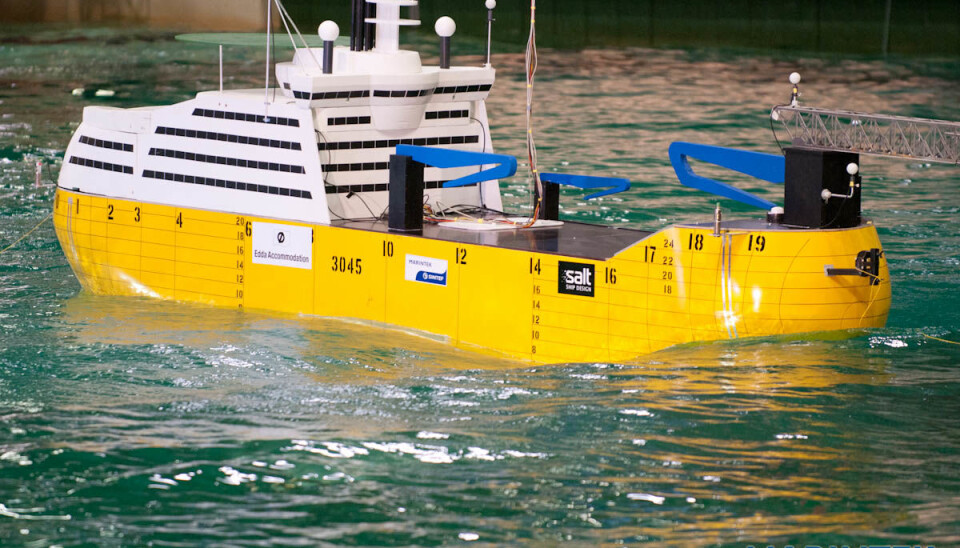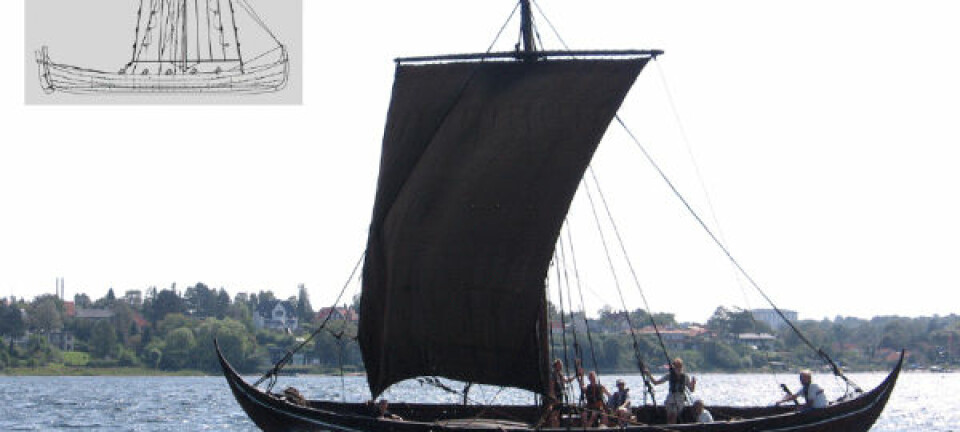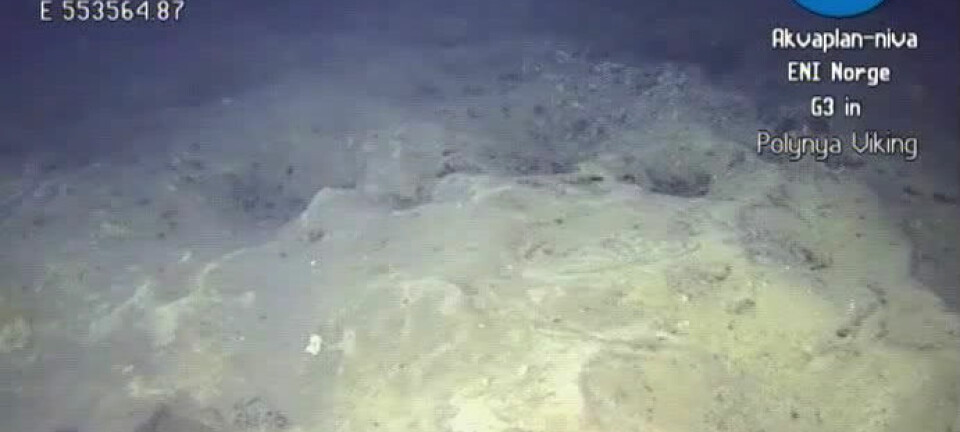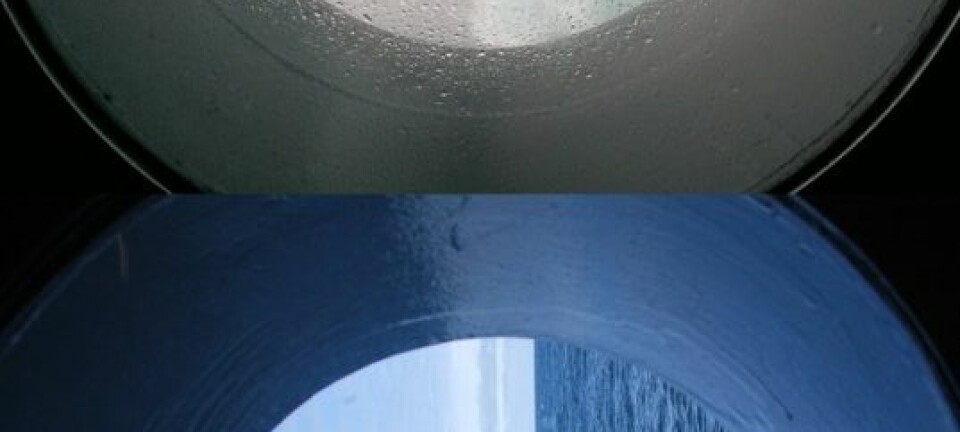An article from Norwegian SciTech News at SINTEF

The ship that waves won’t rock
This ship makes it easier to find one’s sea legs, thanks to opposing waves created in specially-designed tanks fitted in the hull.
Denne artikkelen er over ti år gammel og kan inneholde utdatert informasjon.
The ship will house personnel working on offshore installations, and is optimized to provide the best possible comfort when serving a platform.
“This concept provides an alternative to the semi-submersible platforms commonly used at present. The aim is to create a more mobile hotel unit which can be leased by oil companies which operate in several parts of the world. Our job has been to test and document the ship characteristics and investigate whether the characteristics makes for a comfortable stay at sea,” explains Sverre Anders Alterskjær at the SINTEF subsidiary, MARINTEK.
The hotel ship, designed by the Stord-based maritime design company SALT, is being built under contract for ship owner Østensjø.
Built-in waves
The integrated system designed to reduce rolling of the vessel has been developed by Hoppe Marine and thoroughly tested by Alterskjær and his research colleagues at MARINTEK.
hey are specialists in investigating new ship and hull concepts using the unique test basins in their laboratories.
The roll damping is achieved using tanks integrated into the bottom and sides of the hull – called “U-tanks” because of their shape.
“The tanks are filled with water which is set in motion in opposing phase to the wave forces acting on the hull,” Alterskjær explains.
- The tanks are fitted with air valves at the top which partially control the water motion in the tanks.
- Valve opening can be adjusted depending on the ships roll period
- The result is reduced rolling and improved comfort for those on board.
The researchers investigated the optimal opening of the valves at the top of the U-tanks and the correct water level relative to the ship design, as well as measurement of the motion of the ship during voyages and in hotel mode.
Dynamic positioning
In addition to the special hull design, the ship is equipped with six so-called “azimuth thrusters” – propeller drives with directional control used to keep the ship in the same position when in hotel mode. The thrusters oppose the external forces from waves, currents and wind, and can also be used to provide forward propulsion. In hotel mode, the direction and speed of each thruster are determined by a control system receiving continuous input from GPS position measurements, among other things (DP – system). The control system was developed by Kongsberg Maritime.
“We have also carried out a range of tests of the system by creating waves, wind and currents of different intensities in our Ocean Basin. During the model tests, Kongsberg’s DP system was linked to MARINTEK’s physical modelling and measurement systems. This enabled control of the model as if it were a full-scale ship.
“Many specialized tests were also performed to investigate the interaction between the hull and the thrusters, and between the thrusters themselves. This gives Kongsberg more possibilities to tune and develop the control system,” says Alterskjær.
Innovative hull design
“The wide-ranging tests have also revealed that the hull design functions optimally and that the ship has the characteristics necessary to handle this type of operation,” says Johannes Eldøy, a marine designer at SALT. “We are competing with an established platform concept, and documentation is very important for the oil companies, which place high priority on safety.”
Eldøy is responsible for the design of the vessel, a very important element of which is the gangway, attached at the bow.
“The most important thing has been to improve the efficiency and safety of the connection between the offshore installation and the gangway, which is as much as 55 metres long. This is a critical point because the vessel must display the least possible vertical motion in response to the waves while at the same time maintaining its position,” the designer explains.
The challenge has been met by incorporating features such as providing the vessel with a special hull shape, so that it looks almost the same at both bow and stern. Whatever direction the waves come from, the motions of the vessel must be as small as possible.

































